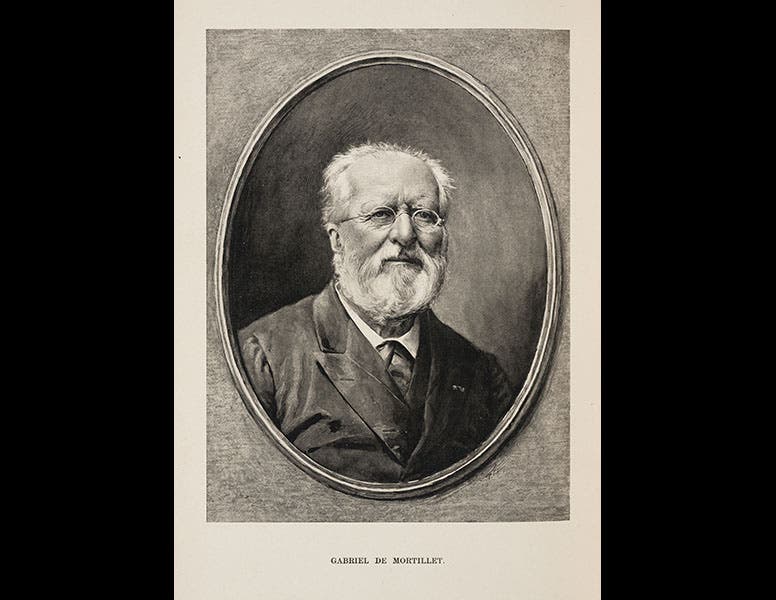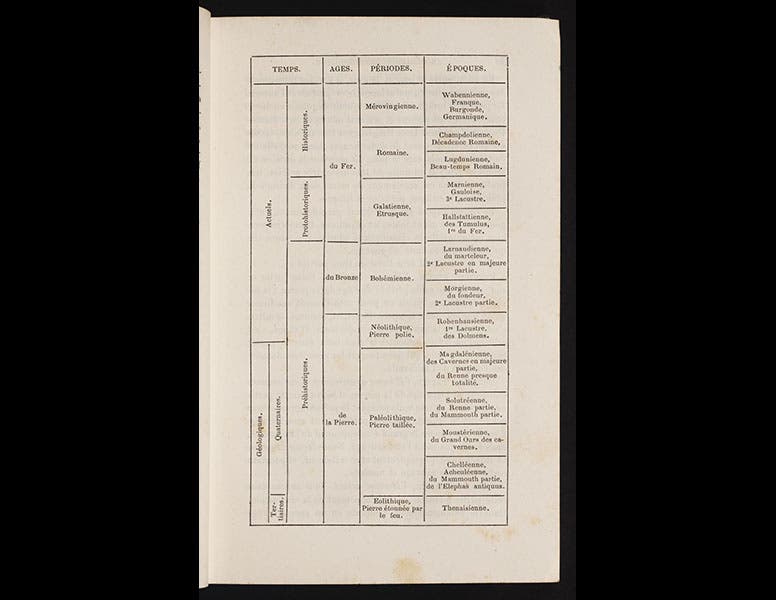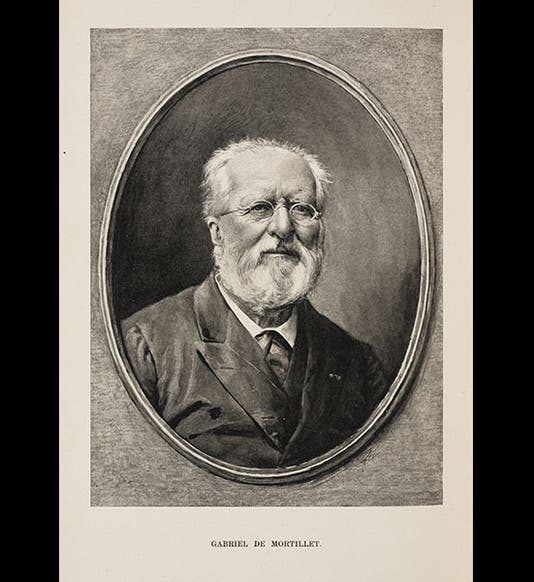Scientist of the Day - Gabriel de Mortillet

Linda Hall Library

Linda Hall Library

Linda Hall Library

Linda Hall Library

Linda Hall Library
Louis-Laurent Gabriel de Mortillet, a French archaeologist, was born Aug. 29, 1821. In the 1860s, archaeologists and geologists, especially in France, first came to understand that humans have been living on earth for a very long time, dwelling in caves, making stone tools, and hunting animals that are now extinct. They soon realized that these early humans had gone through different cultural stages. Some of these prehistoric peoples seem to have hunted mastodons and mammoths, since bones of those animals were found in their cave sites; others hunted primarily cave bears, or reindeer, or aurochs (primitive wild cattle). The French archaeologist Edouard Lartet labeled these different human stages after the primary animals that supported them, calling them the Age of the Cave Bear, the Age of the Reindeer, the Age of the Aurochs, etc.
De Mortillet, however, thought that early peoples were better distinguished by the tools they made. The tools found near the French town of Chelles were simple hand axes (fourth image); those from Le Moustier were flakes, chipped from a prepared core; de Mortillet called such tools, and the peoples who made them, Chellian and Mousterian. The people who lived at Solutré made delicate bifacial points using pressure-flaking techniques; those from La Madeleine fashioned harpoons and points from bone and ivory, sometimes inset with microliths; de Mortillet named them the Solutrean and Magdelenian tool cultures.
De Mortillet then attempted to arrange the tool cultures in a probable chronological order: first Chellian peoples and tools, then Mousterian, Solutrean, and Magdalenian (third image). De Mortillet, as it turns out, was onto something; later archaeologists rejected Lartet’s scheme based on animals of the hunt and adopted de Mortillet’s tool cultures, so terms like Mousterian and Magdalenian are still used to identify Paleolithic tools and the people who fashioned them. Many tool industries have been added since, such as Aurignacian and Gravettian, and De Mortillet’s Chellian type has been replaced by Acheulean, although de Mortillet well recognized that the hand axes from Saint-Acheul and Abbeville were identical to those from Chelles; he chose Chelles as the type site, we prefer Saint-Acheul.
De Mortillet’s typological system was laid out in several publications, most notably Le préhistorique antiquité de l'homme (The Prehistoric Antiquity of Man, 1883), which we have in our History of Science Collection, and from which all the images above were taken, except the portrait, which appeared in Popular Science Monthly in 1899. Several years ago, we exhibited a number of important 19th-century archaeological publications in our exhibition about the discovery of human antiquity, Blade and Bone, and we elected not to display de Mortillet’s book, because it contains few illustrations and lacks eye appeal. So de Mortillet did not make the final cut. Lartet, with his beautiful lithograph of an engraved tusk from the Age of the Mammoth, was included, even though we now call his find, after de Mortillet, a Magdelenian work of art.
Dr. William B. Ashworth, Jr., Consultant for the History of Science, Linda Hall Library and Associate Professor, Department of History, University of Missouri-Kansas City. Comments or corrections are welcome; please direct to ashworthw@umkc.edu.






